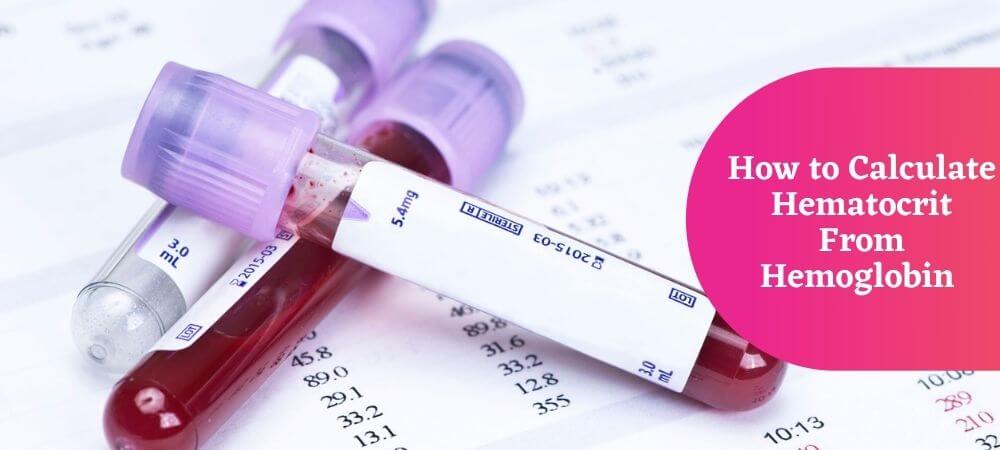The names for the hematocrit, such as packed cell volume (PCV), volume of packed red cells (VPRC), or erythrocyte volume fraction (EVF).
Calculate Hematocrit from Hemoglobin
The term hematocrit (haematocrit in British English) comes from the Greek words haima ( “blood”) and krites (“judge”), and hematocrit means “to separate blood”. It was discovered in 1891 by Swedish physiologist Magnus Blix as haematokrit.
The hematocrit, also known as the volume and percentage of red blood cells in blood, measured as part of a blood test. The haematocrit measured depends on the number and size of red blood cells. The normal values of henatocrit is 40.7%–50.3% for males and 36.1%–44.3% for females.
The purpose of red blood cells is to transfer oxygen from the lungs to body tissues, a blood sample for hematocrit test measure the red blood cell volume percentage, it is a point of reference of its capability of delivering oxygen. Hematocrit levels that are too high or too low can indicate a blood disorder, dehydration, or other medical conditions. An abnormally low hematocrit may suggest anemia, a decrease in the total amount of red blood cells, while an abnormally high hematocrit is called polycythemia.this are potentially life-threatening disorders.
Fresh EDTA plasma sample or whole blood sample is preferred. Mix properly befor run test
Methods
The hematocrit test calculated by an automated analyzer or directly measured, depending on the analyzer manufacturer. The determintion of Calculated hematocrit by multiplying the red cell count by the mean cell volume. The hematocrit is slightly more accurate as compair as the PCV includes small amounts of blood plasma trapped between the red cells. An estimated hematocrit percentage may be derived by triple volume of the hemoglobin concentration in g/dL and dropping the units.
Another method bbyeof measuring hematocrit levels is by optical methods such as spectrophotometry. Through the differential spectrophotometry, the differences in optical densities of a blood sample flowing through small-bore glass tubes at isoelectric wavelengths for deoxyhemoglobin and oxyhemoglobin and the product of the luminal diameter and hematocrit create a linear relationship in between that is used to measure hematocrit levels.
Risk and Side Effects
That accompany the tests of hematocrit from blood is being extracted from subjects. It may experience a more than normal amount of hemorrhaging, hematoma, fainting, and possibly infection.
Known hematocrit levels are used in detecting conditions fail at times due to hematocrit being the measure of concentration of red blood cells through volume in a blood sample. It is not for the mass of the red blood cells, and thus the changes in mass can differe a hematocrit level or go undetected while affecting a condition.
Additionally, the cases in which the blood for testing was inadvertently drawn proximal to an intravenous line that was infusing packed red cells or fluids. In these situations, the hemoglobin level in the whole blood sample will not be the true level for the patient because the sample will contain a increase amount of the infused material rather than amount of diluted into the circulating whole blood. That is, if packed red cells are being supplied, the sample will contain a increase amount of those cells and the hematocrit count will be artificially very high.





